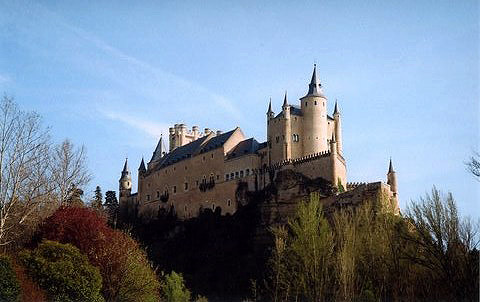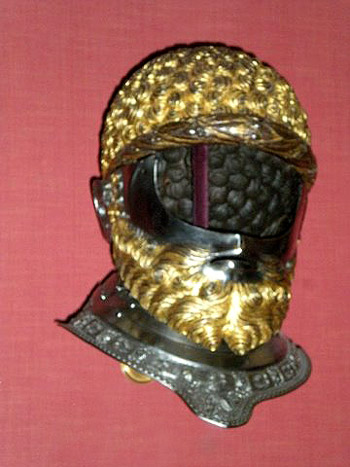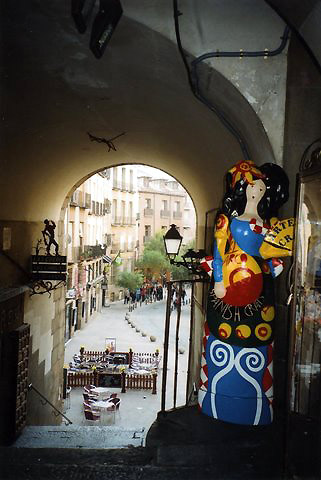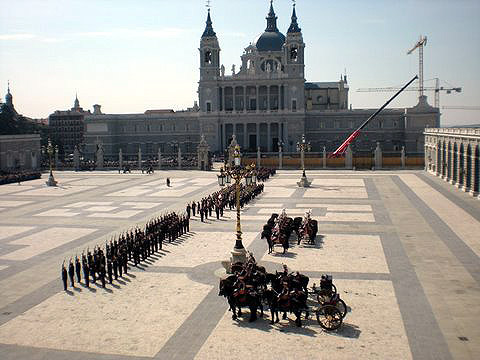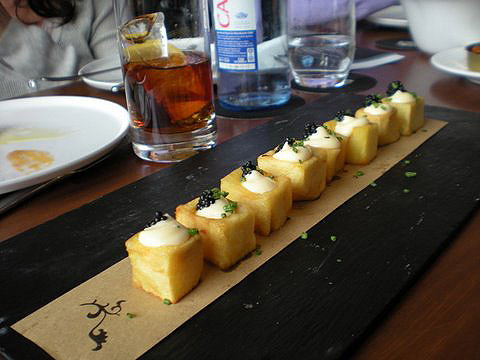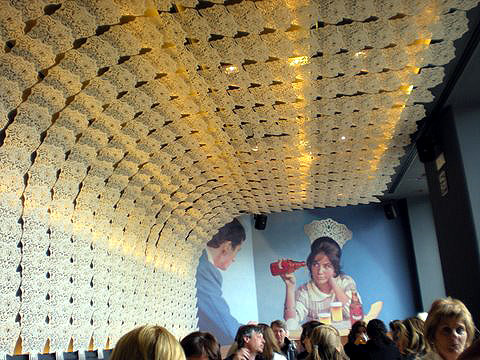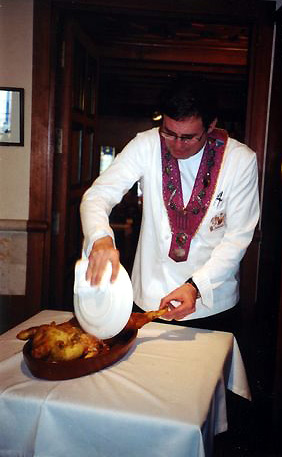 |
 |
|
 |

|
Madrid
and the Art of Armor
Madrid, Spain by Corinna Lothar
The Spaniards, seeking new trade routes, gold and the Fountain of Youth, laid waste to much of what they found, but Renaissance Spain gave us Cervantes, Lope de Vega, Goya, El Greco and Velazquez. And, of course, the Inquisition. A taste of the glory and splendor of Spain at the height of its power in the 16th and 17th centuries, is on display in Washington, D.C. at the National Gallery of Art in a stunning exhibition called The Art of Power. Suits of armor, portraits of the kings in early full-metal jacket, and tapestries recounting royal victories, make this a once-in-a-lifetime exhibition. The exhibition will be up until November 1st, when portraits, objects, tapestries and armor return to Spain. Armor was the haute couture of 16th century. Much as European (and American) gentlemen would turn to Saville Row centuries later for sartorial splendor, royalty sought out certain armorers for their expensive suits of steel and silver. Italian master armorer Filippo Negroli was a favorite, as was German master Desiderius Helmshmid, the favorite of Emperor Charles V. (After the military loss to Austria in 1551, the Spanish no longer patronized German armorers.) There was armor for battle, for light cavalry, heavy cavalry, tilting, tournaments, ceremonial functions and even for weddings. A suit of armor consisted of some 20 pieces, covering the body, the arms and the legs. A full “garniture” included an additional 20 to 40 pieces. A full suit of armor could weigh up to 40 pounds. The style and elegance of armor bears little similarity to contemporary helmets, flak jackets or bullet-proof vests.
Royal armor was often adorned with opulent decorations, including the
golden fleece, symbol of the Spanish royalty, and images of saints and
the Virgin Mary to underscore the ruler as the ideal Christian soldier
and defender of the Faith. Decorations were chosen by the client. The
Negroli designed helmet of Emperor Charles V, which is in the exhibition,
alludes to Ottoman Turkey, Charles V’s principal enemy in the Mediterranean,
with a symbolic image of an Ottoman Turk, hands bound. If you miss the Spanish armor in Washington, you will be able to see it upon its return, or if you are in Madrid during this summer, there’s still plenty to be seen there, particularly at the Royal Armory, which has the finest collection of weaponry in Spain. Spain today, after the difficult years of the mid-twentieth century, is once again rich, elegant, fun-filled and fun-loving. Madrid is a city of high style, fabulous museums, fascinating architecture, excellent restaurants and lovely parks. It’s an easy city in which to get around on foot, or via buses and the well-marked metro system. The heart of Madrid is its Old Town, with the Puerta del Sol as the city center. Here, every new year’s eve, as the clock strikes 12, the celebrating Madrillenos eat 12 grapes – one with each chime of the clock – to invite good fortune in the new year. It is from the Plaza del Sol that all the highways leading from Madrid start, and it is in this square that many important events in the history of Spain took place. The bronze sculpture of a bear and a strawberry tree, the symbol of Madrid, is in the square. The Plaza Mayor is rimmed by beautiful arcaded buildings, now home to curio shops. Once, the Plaza was the scene of bullfights, pageants and religious autos da fe, where the king and queen watched the burning of heretics. The fires are extinguished now, and the square is occupied by students and young travelers.
Tucked into the narrow streets surrounding the Plaza Mayor are small shops and countless little restaurants and tapas bars. The restaurant Botin, founded in 1725, claims to be the world’s oldest. Botin, like many restaurants in Madrid, specializes in roast suckling pig. A few blocks from Botin stands the curiously named Monastery of the Royal Barefoot Sisters – so called because the nuns wore sandals. This imposing red brick building is one of the city’s few remaining 16th century buildings. Originally a palace, it was transformed into a convent for ladies of the nobility by the sister of Philip II. Inside are a magnificent staircase and a wealth of beautiful paintings and tapestries. The Royal Palace sits high on a bluff over the Manzanares River. For centuries a fortress, it became a palace in the 18th century during the reign of Philip V. It remained in use by the royal family until the abdication of Alfonso XIII in 1931. In 1982, all possessions of the crown became part of the “patrimonio nacional.” Although the king and queen continue to have the right to use the palace, the royal family no longer lives there. The lavishly furnished reception rooms and state apartments are open to the public. At noon on the first Wednesday of every month there’s a festive changing of the guards in the square in front of the palace.
Madrid’s most famous museums are in the Bourbon section adjacent to the Old Town. The Prado Museum houses a world-famous collection of Spanish paintings ranging from the 12th to the 19th centuries, including outstanding works by Velazquez and Goya. The neighborhood is home to the Thyssen-Bornemisza Museum. Its collection represents the history of Western art from early Italian Gothic paintings to 20th century pop art, with every period in Western art represented. Nearby is the Museum of Reina (Queen) Sofia which houses 20th century art, including Picasso’s Guernica, which returned to Spain from New York in 1981, pursuant to the painter’s wish that the painting not return to Spain until democracy was established in Spain. The museum of decorative arts and the archaeological museum are likewise in the neighborhood. While the Old Town is replete with little restaurants and tapas bars serving traditional cuisine, the Bourbon section of town offers diners some contemporary tapas bars. One such popular tapas restaurant is Estado Puro, where diners perch on stools at high counters to nibble little squares of potato with a fiery sauce, delicious mussels, and white anchovies as well as the more traditional Serrano ham and ham croquettes.
At Dassa Bassa, the décor is ultra-contemporary and the young chef prepares original dishes, many with a humorous twist. You might call it Nuevo Espagnol. For more traditional dining, the Taberna del Capitan Alatriste offers such Spanish favorites as baked cod, Iberian pork and grilled octopus. To fully appreciate the splendor of Renaissance Spanish armor, a visitor should see the 16th century El Escorial palace of Philip II in the foothills of the mountains northwest of Madrid, and the summer palace La Granja near Segovia. The Escorial was conceived as a mausoleum and the funerary urns of Spanish kings line the marble mausoleum in the Royal Pantheon. The vast building includes a museum of art, a magnificent library and a basilica. The 18th century La Granja de San Ildefonso was built by Philip V, grandson of King Louis XIV of France, as a hunting and summer residence. This miniature Versailles, with lush gardens and opulent décor, lies about 50 miles from Madrid. It houses one of the best collections of tapestries in the world, some larded with threads of gold and silver. The Royal Glass Factory lies just outside the palace grounds. The factory made all the glassware for the palace, and visitors today can watch the long-winded glassblowers at work. The village of San Ildefonso, where La Granja is located, is just outside the town of Segovia. Segovia is worth a visit for its extraordinary Roman viaduct, the 16th century cathedral, the imposing Alcazar - a castle fortress where Queen Isabella promised Columbus the financial backing he needed to sail across the Atlantic on his voyage of discovery - Romanesque churches and a small contemporary art museum. Most important, Segovia claims to serve the best roast suckling pig in Spain.
Then it’s back to Madrid, perhaps for tea in the Hotel Ritz, built in 1910 in the Bourbon section of town. Now restored to the splendor marred by the Spanish civil war and the poverty that followed, the Ritz is a hotel of mystery and legend. If you happen to be in Madrid this summer, enjoy the city’s summer festival of 1,166 performances. The festival starts on June 25 and continues through August 23 with concerts, plays, dance performances, film screenings, circuses and dancing in the streets. For information on Madrid, contact the Madrid Tourist Bureau on Spain.info. For information on “Summer in the City” events, go to esmadrid.com. For information on Segovia, go to segoviaturismo.es.
|
|
I found a Mich Goss J. Grassmayr Innsbruck bell with Jesus,
a crucifix and a flower on it. Do you have any information about it you can
share with me? Many thanks. I don't have any information on that specific bell. If she wants information, "Liz" in San Bernardino should contact the factory. Here is the information: Address Grassmayr Foundry and Bell Museum, Leopoldstrasse 53, Inssbruck, A-6010 Austria. Telephone: 43 512-59416-0. Fax: 43 512-59416-22. E-mail: johannes@grassmayr.at or info@grassmayr.at. Corinna
Been there -- thought I'd done it -- you proved me wrong. Great travel coverage -- even for those who have lived there. --- Bill, Redmond, Oregon
Corinna, my dear, What a wonderful series of words you have collected together to paint a mesmerizing story about one of my favorite places. Even though I've traversed these same locales as you many times, your delightful descriptions made me want to book a flight this very second and see again some of the places that time did not allow me to linger in before. Your photos are also riveting, and I loved the pantyhose one - what a clever, sexy way to promote that article of the female form. Your colorful words make the entire region literally come alive before my eyes - a rare gift for any writer! Bravo and again Congrats on your top notch feature. Best regards. Best regards,
Hello Corinna, This is very roundabout ... I was recently teaching (Legal Reasoning) in Kabul and encountered Ann Geracimos, who said she knows you from the Times. She recently provided me with an electronic version of your 2007 piece about returning to Frankfurt (which I enjoyed very much). Jonelle and I are well (and enjoying our 3 grandchildren, who live within blocks of our house). I hope you are well. I will now look for your travel writing regularly. Best regards,
What an amazing background Ms. Lothar has! I enjoyed her article
very much. I found it to be quite intriguing, especially the interpreter school
bit.
I loved your article on Metz. I was an exchange student living there from 1981-1982 and have always felt like Lorraine was the most overlooked part of Europe. You really captured the feel of the city with your photo and articles.
|
This site is designed and maintained by WYNK Marketing. Send all technical issues to: support@wynkmarketing.com



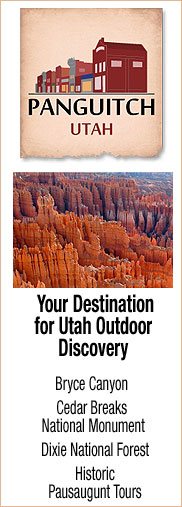








 he
Spanish Habsburgs were the masters of Europe with an empire that included
not only Spain, but Belgium, Austria, Sicily and parts of Italy, France
and Germany. Spain had begun its age of discovery when Queen Isabella
dispatched Christopher Columbus on his voyage of discovery to the New
World.
he
Spanish Habsburgs were the masters of Europe with an empire that included
not only Spain, but Belgium, Austria, Sicily and parts of Italy, France
and Germany. Spain had begun its age of discovery when Queen Isabella
dispatched Christopher Columbus on his voyage of discovery to the New
World.